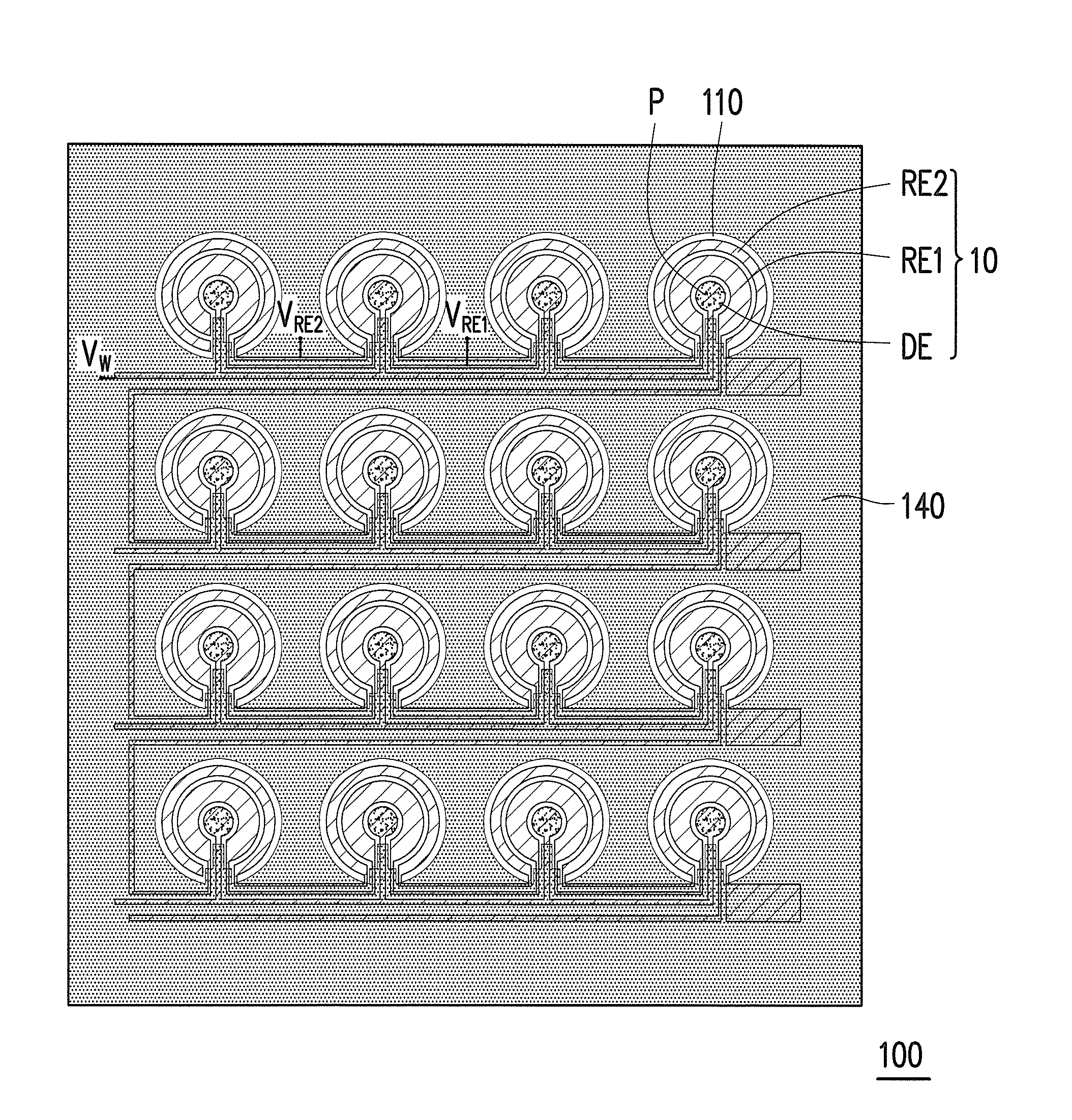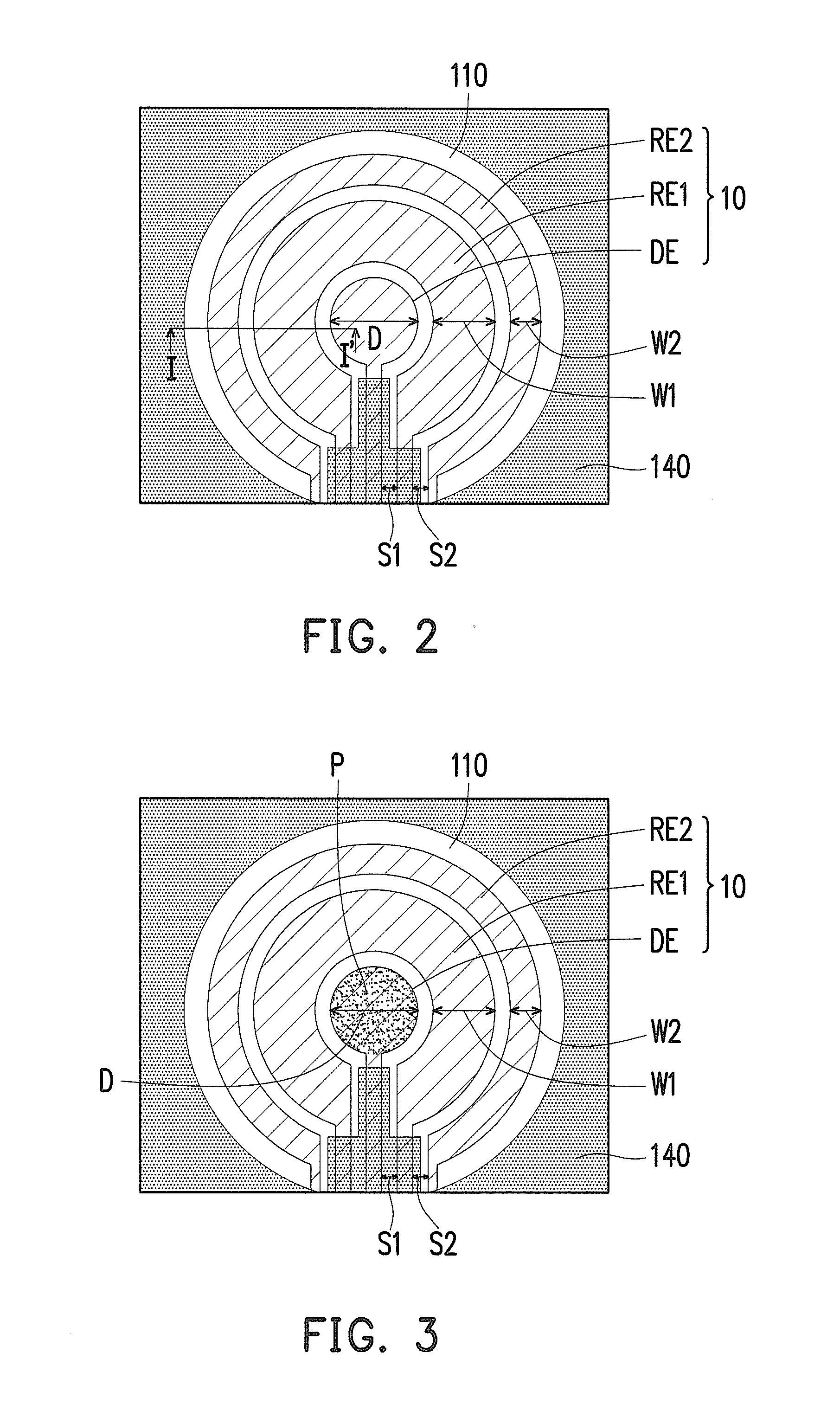Electrochemical affinity sensing chips integrated with fluidic stirring and operation method thereof
a technology of electrochemical affinity and sensing chip, which is applied in the field of biosensing chip and an operation method thereof, can solve the problems of inefficiency of hybridization by the affinity reaction between the object and the probe modified on the electrode surface, the limit may not be further reduced, and the pretreatment procedure and equipment needs can be a lot of cost and time, so as to shorten the sensing time and reduce the detection limit
- Summary
- Abstract
- Description
- Claims
- Application Information
AI Technical Summary
Benefits of technology
Problems solved by technology
Method used
Image
Examples
example 1
Manufacture of the Electrode Groups
[0049](1) The slides are immersed in the double distilled water and sonicated for 5 minutes by 3 times. After being taken out and dried, the slides are placed into isopropanol and sonicated for 30 minutes, and then placed into the double distilled water and sonicated for 5 minutes repeating by 3 to 5 times, to remove residual isopropanol. After being taken out and dried, the slides are placed into sulfuric acid: hydrogen peroxide (3:1) solution (a piranha solution) and water-heated to 80° C. After heating, the slides are sonicated for 30 minutes, and then removed into the double distilled water for 3-5 times 5 minutes sonication, to remove the residual piranha solution. The cleaned slides are removed out and baked at 95° C. for 5 minutes, to remove the residual moisture on the slides.
[0050](2) A positive photoresist (AZ4620, Shipley) is coated on the slides by the spin coating method. The conditions of the spin coating are as follows: the first rot...
example 2
Manufacture of the Palladium Layer
[0057]The Au electrode is placed in a 1 mM palladium coating solution (containing 1 mM K2PdCl6 and 0.1 M sulfuric acid, pH 1.10), an electrodeposition is performed with an external Ag / AgCl reference electrode and a platinum (Pt) counter electrode, and the double-rings electrodes are connected to a multifunctional potentiostat (model number: CHI 7051B, Austin, Tex., available from CHI Instruments company). The potential stability of the electrodes when performing the electrodeposition is estimated.
[0058]The deposition parameters are as follows:
[0059]Step 1: Using linear sweep voltammetry (LSV) to set the voltage to be from +0.6V to 0V and the scan rate to be at 50 mV / s. Five scans are performed.
[0060]Step 2: The voltage is set at the half peal potential (Ep / 2) and the deposition is performed for 900 seconds. The Ep / 2 of the present example is about 0.43V.
[0061]An open circuit potential (OCP) analysis is performed to the above-mentioned double-rings e...
example 3
Sensing of Geminiviridae Nucleic Acid
[0062]The nucleic acid sequence which is to use (synthesized by Bio Basic Inc.) is purified by HPLC and 105 μL double distilled water is dripped into the tube containing the DNA powder. Then, the DNA adsorbed on the wall of the tube is desorbed by centrifugation. After measuring the optical density of the DNA, tris(hydroxymethyl)aminomethane (Tris) containing 1 M NaCl (hereinafter referred to as Tris(NaCl)) (pH7.0) is mixed with the DNA to form a 100 μM DNA solution. Experimental procedures of the DNA modification and the affinity experiments are described in detail as follows.
[0063]Step 1: 15 μL of 0.1 μM to 10 μM thiolated probe DNA solution (please refer to Table 1 for the DNA sequence) (Tris(NaCl)) is dripped onto the electrode and the modification of the electrode is performed for 2 hours. Thiolated pDNA molecules are immobilized onto the surface of the gold electrode by the gold-sulphur binding. After washing the electrode surface with the ...
PUM
| Property | Measurement | Unit |
|---|---|---|
| Diameter | aaaaa | aaaaa |
| Diameter | aaaaa | aaaaa |
| Diameter | aaaaa | aaaaa |
Abstract
Description
Claims
Application Information
 Login to View More
Login to View More - R&D
- Intellectual Property
- Life Sciences
- Materials
- Tech Scout
- Unparalleled Data Quality
- Higher Quality Content
- 60% Fewer Hallucinations
Browse by: Latest US Patents, China's latest patents, Technical Efficacy Thesaurus, Application Domain, Technology Topic, Popular Technical Reports.
© 2025 PatSnap. All rights reserved.Legal|Privacy policy|Modern Slavery Act Transparency Statement|Sitemap|About US| Contact US: help@patsnap.com



